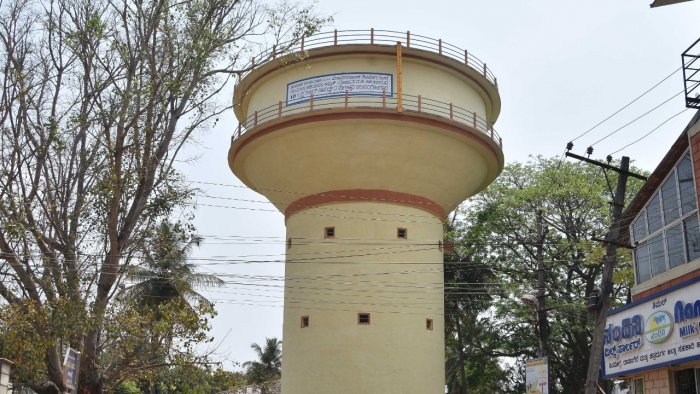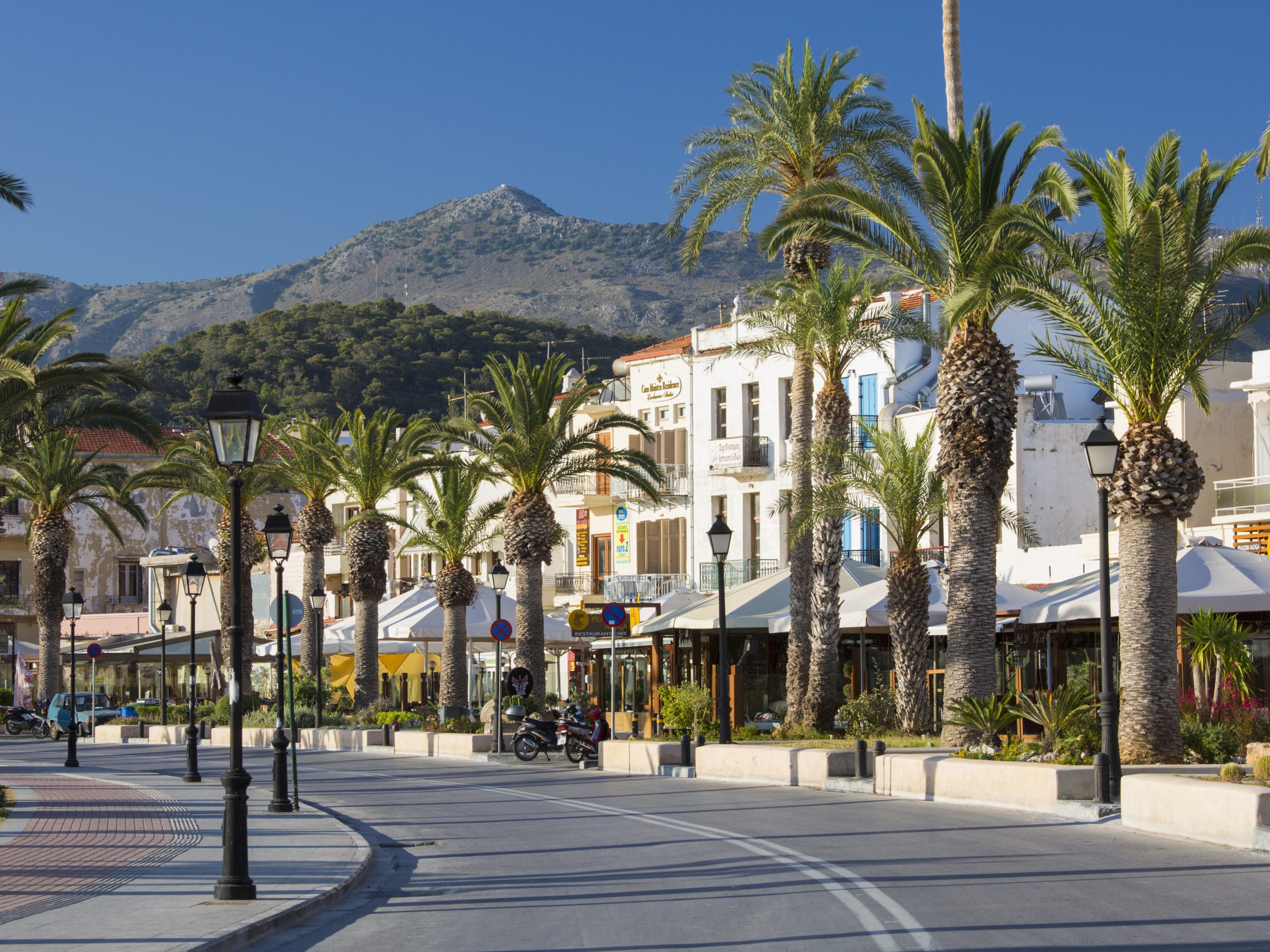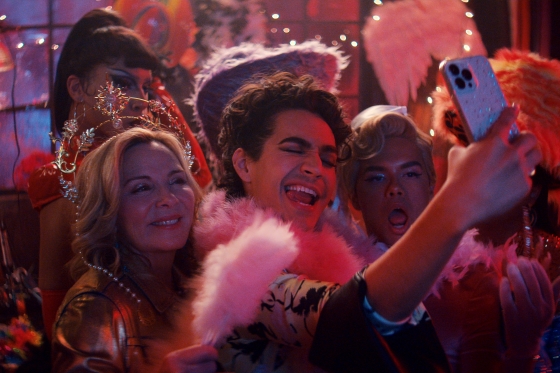Rosettamoon publishes today, three approaches to the South Australian Government to cease the use of chloramines in the South Australian Water supply system. In this interview Mr Carney makes a claim of wilful negligent poisoning of the public and states that the evidence is in plain site for those that wish to examine it.
Nigel Carney, Director of Wellwater Solutions has encountered ongoing queries and testimonies of personal harm and damage following the rapid acceleration of the introduction of chloramines to several regions of South Australia, most recently the once pristine Fleurieu Peninsula, South of Adelaide.
Rosettamoon Interview: February 21, 2022
RM: Mr Carney, you supply and sell water purification systems, is this an attempt to alarm the public and drum up business?
Carney: Not at all, the queries have arisen from the public at markets and during visits to business and our products have no chance of removing chloramines and any companies claims of an economical solution are spurious in my opinion, my view is that this is a public health emergency and the negative effects reported by the public are real and being blatantly ignored by SA Water and SA Health.
RM: What specific effects are being reported?
Carney: Skin irritation, burning sensations, foul odours, respiratory effects, fish dying, dogs not going near the water, plant growth and vitality stunted, all of these have been reported in a small way on the mainstream media as well.
RM: What exactly are chloramines?
Carney: Traditionally, filtration, ultra violet treatment and chlorine is used to kill bacterial pathogens that may arise from water sourced from reservoirs or from the Murray River. Poor town planning and environmental management has meant that fertiliser leaching into rivers and reservoirs has caused an increase in the bacterial count in treatment plants, so the garbage in garbage out effect is at cause to some degree. Chloramine is a mixture of ammonia and chlorine and this is sold as a solution whereas the scientific literature explains that it actually creates more problems for the users of the water, primarily via the process of nitrification and the complex process of removing the proceeds of from the system.
RM: Nitrification?
Carney: When the chemical added to the water supply, monochloramine, it combines with all manner of minerals, chemicals and organic materials it meets on the way, hence the term chloramines is more accurate. A toxic cocktail ensues and a range of other toxins depending on the water conditions and the conditions of water use. Di-chloramines and tri-chloramines are the first cabs off the rank and they transform otherwise when they interact at different PH, temperature and with other organic materials in the water, its essentially a game of russian roulette.
RM: Surely SA Water are testing the water to guarantee the safety of the public?
Carney: Thats a good question. They are testing the water network itself, but they have no responsibility for the water quality after it goes through the meter and is paid for.
RM: Excuse me! Can you elaborate on that please.
Carney: SA Water and water utilities across Australia reference the Australian Drinking Water Guidelines, which is an eleven hundred page complex document which guides how they can meet water safety levels. The problem in that document is that by legislation the extent of their responsibility stops at the meter, and it’s after the meter that the chloramines menace begins and the complex toxins impact on the public and the environment. The other problem is that there is no upper limit on the amount of mono-chloramine that can be added to the water, its a suck it and see approach actually!
RM: So SA Water and SA Health are absolved from the harm that the chloramine causes when the water is actually used by the public?
Carney: Exactly! But it’s even worse than that.
RM: Worse! How so?
Mr Carney: The chloramines actually react aggressively with the pipes and pipe joiners in the public water system and the pipes and joins in the home premise, business or farm. There are extensive studies of the leaching of lead and other harmful substances from metal and PVC polymers used in piping, and these would not even be subject to the regulatory testing, so its a toxic cocktail being unleashed on the public and the environment and the regulations have seemingly been designed to limit any liability of the government.
RM: Without wishing to sound melodramatic this sounds like a conspiracy to poison the public and the environment Mr Carney, do you have the facts and the studies to substantiate all of this?
Carney: I certainly do, and so would the government of South Australia, which makes this a claim of wilful criminal negligence, and I am happy to share the research and my approaches to SA Water and the Government of South Australia with your readers, its readily accessible information on the web.
RM: This is developing into quite a story, these links and letters would be appreciated certainly. Can you offer any advice to the public that may be not aware of whats happening or advice to the people that are aware and not sure where to go from here?
Carney: Always do your own research, I have only been made aware of the ill-effects directly from the public since November 2021, I am no expert and not a lawyer. On the basis of the information there is a clear case not to pay for contaminated water on a common law and equity law basis, so en-masse this is a sensible solution for regions impacted. There is no apparent scientific or economic case for the use of chloramine, as chlorine is far more effective by a multiple of factors and can be dealt with by the end user of the water. Chat to local lawyers who can arrange a class action to recover damages for harm and penalise the government for the harm, get organised and stop paying for toxic water is the fast solution to a big problem.
RM: Are you confident of an outcome Mr Carney?
Carney: Yes I am, South Australia still has a well powered Ombudsman Office and an ICAC and even Erin Brockavich has weighed into the campaign. There is a very reasonable case of wilful criminal negligence, which would make any politicians or public servants liable under the right jurisdictions, so the matter cant be ignored for too long.
RM: Many thanks Mr Carney for your time, and we look forward to receiving the documents you have sent to the government of South Australia and will touch base as the story develops.
Update April 2022: The Ombudsman Office has shown no interest in the chloramine contamination underway, I am hopeful the new government may wake up to the damage being done by the SA Water and the authorities that care not.
Documents received by the Ombudsman Office South Australia, Premier and Ministers:
February 21, 2022
Dear Mr Ombudsman, Premier and Ministers copied,
Part 3 of this submission is a further validation of the need for urgent action to be taken to safeguard the public and the environment from the ill-effects of chloramines upon the public, environment and the public and private water infrastructure across South Australia.
Part 2 highlighted the absence of public and environmental protection via the Australian Drinking Water Guidelines in relation to the characteristics of chloramines and the byproducts of nitrification.
This submission further validates Part 1 and Part 2 but also examines the detrimental impact of chloramines upon the public and private piping network as well as a plethora of adverse public health impacts that have been studied and reported on intensively globally.
It should be of alarm to all South Australians, that reliance has been placed upon a South Australian public servant, a Dr, Daniel Hoefel, who while claiming water quality expertise, has been making statements that can be regarded on the basis of his expertise, as wilfully negligent and damaging toward the public, the environment and the public owned water utility assets of the SA Water Corporation.
Bearing in mind that the regulations as they stand do not protect the premises to which water is supplied, further simple study indicates that chloramines even at low levels have an aggressive corrosive characteristic upon galavanized and copper pipes and the brass fittings using solder common across South Australian public and private water pipe installations.
The studies also indicate a rapid corrosive action upon polymers based PVC piping, suggesting realistically that a large degree of damage and toxic leaching of chemicals from public and private water pipe infrastructure is happening today.
Dozens of SAWater public relations statements are in clear and evident contradiction of the science and countless studies available, in the following statement, it appears Dr Hoefel is assuring the public that water contaminated with the proceeds of nitrification is okay, no justification or scientific reason, an assurance as stated that can be seen as wilfully negligent and reckless in the extreme.
SA Water’s Senior Manager of Water Expertise and Research Dr Daniel Hoefel says residents are receiving the same improved water quality already provided to Myponga, following the township’s supply switching to chloramine in 2018.
“Although it’s a matter of individual preference, some people may notice that tap water disinfected with chlorine has a distinct smell and taste, and chloraminated water lessens this effect,” Daniel says
“Some of our best-tasting and award-winning tap water provided to towns like Morgan, Keith, Port Pirie, Clare and Whyalla is disinfected with chloramine. The change from chlorine to chloramine will ensure the Fleurieu’s water remains clean and safe to drink, but with a slightly different and improved flavour profile.”
“Some customers may temporarily experience discoloured water through their taps as a result of the change over to chloramine as organic matter is stirred up through the pipe network, however this is normal and your tap water remains safe to drink.”
https://fleurieunews.com.au/news-sport-lifestyle/news/better-tap-water-for-the-fleurieu?id=606a9d5f60e9c00028181364
Suffice to say Dr Hoefel’s regular misleading media statements of assurance are scandalous and as dangerous as the chloramines he is so enthusiastic about.
Why is Dr Hoefel, SA Water and SA Health allowing contamination of the public water supply and the degradation of public and private water supply infrastructure?
Premier, and Ministers copied, please act immediately and instruct the SA Water Corporation to cease the use of Chloramines and please prioritise an independent safety review of the SA Water supply system and the management of SA Water.
Any delays continuing harm and damage would represent further acts of wilful negligence by the parties that have been properly informed of the risks particularly given the absence of any regulatory safeguards for the public and the environment.
Kind regards,
Nigel Carney
February 21, 2022
Dear Mr Ombudsman, Premier, and Ministers copied,
In addition to the response provided to your office, February 18, please assess also the following with regard the SA Water chloramines complaint, represented on behalf of multiple and ongoing concerns reported by the public experiencing adverse effects and reactions, as also reported in the media.
As noted earlier with regard the urgency of a matter of contamination of the public potable water supply, please note that the matter extends well beyond the issue of the SA Water Charter, the quality of drinking water and the Australian Drinking Water Guidelines, which is drastically falling short of the mark of protecting the health of the public, and the environment.
For this reason the response is copied additionally to the Minister of Heath SA, the Minister of Environment and Water and the SA Chief Public Health Officer.
As noted earlier as well, given the multiple sources that can be cited vis a vis the inefficacy of chloramines and the lack of justifiable cost in relation to the more effective by a large degree, the conventional use of chlorine and UV treatment, this addition to the response is also an urgent call out to the Premier and the Ministers copied to cease the use of chloramines until such point as a proper and full investigation is undertaken.
As there is arguably no economical loss implications (arguably the opposite) via a reversion to traditional disinfection methods, it’s trusted that the precautionary principle can be adopted in the short term in the interests of the public health and the environment.
Regardless of the copy to the leader of the opposition, this is not a political issue, it is rather an urgent public health emergency.
A full assessment of the risk needs to extend beyond the issue of drinking water alone principally on account of:
1.the well studied process of nitrification and the harmful byproducts of and
2.the impact of chloramines corrosive properties in relation to the leaching of harmful substances from public water supply infrastructure and from the water supply infrastructure in residential, commercial and agricultural properties.
A definition of nitrification: Nitrification is a biological process that converts ammonia to nitrite and nitrite to nitrate. If standards require that the resulting nitrate be removed, one treatment alternative is the process of denitrification, in which nitrate is reduced to nitrogen gas.
It is reasonable to assume that the cost of back flushing the SA Water infrastructure of the proceeds of nitrification effects are large and therefore simultaneous to the management of the complaints from the public, the total of which is unknown, that the premier and relevant ministers in the interests of understanding the entire cost of chloramination, initiate an investigation of this aspect of SA Water current management practices.
A regulatory risk/loop hole of important note is highlighted.
As stated, the risk to the public, not highlighted to the public by either SA Water or SA Health is the legislative limitation of water utility (bulk water suppliers) liability/responsibility via the Australian Drinking Water Guidelines, up to and only to, the point the water supply via registered bulk water suppliers reaches the meter.
Hence the rapid acceleration of the use of chloramines in South Australia since 2020 becomes an acute risk to the public, and therefore the regulatory standards fall perilously short particularly in relation to chloramines present in the water which will combine in an untestable and unpredictable manner with water use in the domestic premise, business, medical facilities, and agricultural settings.
Chloramines in fish tanks, in pools, baths, spas and showers etc are extreme risk scenarios where aerosol effect, heating effect and nitrification effect are inevitable and yet outside the current regulatory protection framework.
It was for this very reason that it was suggested to Georgina Carter of SA Water that referral of the public to pool and pet shops for advice on water neutralisation and conditioning is far fetched and fanciful (and indeed negligent) for the in excess of 250,000 water customers in South Australia currently exposed to chloramines and the byproducts of nitrification, di-chloromine, tri-chloromine and the vast number of unpredictable DBPs ( disinfection by products) which will inevitably be produced, and which are by design persistent and virtually impossible to remove without vast filtration resources.
The well noted negative impacts of chloramines on the respiratory systems of humans is a dire footnote to the library of risk while the states population is already at risk from the corona virus pandemic and mask wearing is already impacting negatively on the respiratory systems of the population.
Hence the failure SA Water after I month to provide a simple historical record timeline and a map of the application of chloramines to enable the customers to know and avert risk, is also unreasonable and negligent, given the record accounting and describing the adverse risks studied and compiled globally.
Given the science available and given the risks highlighted already, SA Water’s resort to a panel of water tasting experts (2021) to somehow supposedly testify to the safety of the chloramines can also reasonably be described as both negligent and scandalous.
I trust this supplement to the complaint and the extension of the risk parameters on account of the legislative limits of the Australian Drinking Water Quality Guidelines identified is more than enough to compel the relevant Ministers copied to instruct the SA Water Corporation to cease the use of chloramines pending a full investigation of the SA Water Management practices which are tantamount to an unwarranted, unnecessary and costly unmanned laboratory experiment upon the population of South Australia and the environment.
In relation to the SAFE DRINKING WATER ACT 2011 – SECT 24 and 26, it’s very reasonable to assess that SA Water is well aware of the risks and also aware of the limitations of the testing parameters that place customers and the environment at risk.
Relevant samples only of international and Australian reports are attached to support this approach to the complaint management and related investigations requested to facilitate urgently the return of the water quality to a status of safe to drink and use otherwise without unreasonable and unforeseen risk to the customers of SA Water.
Thank you in anticipation of a prioritised and urgent response to this public health emergency.
Kind regards,
Nigel Carney
Dear Mr Ombudsman,
In response to your initial assessment I can confirm that SA Water has failed to respond to the questions and failed to respond to the most basic request access of the chloramines rollout list.
Your comment:
“In any event, I consider that Ms Georgina Carter appears to have provided you with a reasonable response to your concerns in her email dated 14 January 2022. You then sent subsequent emails on 17 January 2022 and 29 January 2022. At the time that your complaint was lodged with this Office is appears that you had not received a further response. Given that you requested ‘a comprehensive list of all SA areas now being serviced with chloramines, and the dates these commenced’, it is reasonable that SA Water may take some time to respond to your request.
“SA Water Charter: SA Water services: We aim to supply you with a reliable supply of safe drinking water that meets or exceeds all relevant public health, environmental and other regulatory requirements, where available. If there’s a leak or main break that affects your supply of water, we’ll aim to fix it and restore your supply as soon as possible in line with our service standards.” ( Please not there is no upper limit set on the application of chloramines under the drinking water guidelines making the concept of a safe standard absurd nor is reference made to the dangerous byproducts and their effects via application of chloramines)
Mr Ombudsman, there are serious public adverse health effects and serious adverse environmental effects related to Chloramines and the consequent chemicals produced via their use, and these are being reported directly to myself, the SA Water Charter provides that SA Water provide safe and quality drinking water and this is manifestly not so based on widespread common knowledge and expert science available of the adverse health impacts of chloramines and on top of this the absolute non necessity of its use in relation to chlorine and other safe methods of water treatment.
The SA Water Charter also relies on a variety of other Acts and instruments which draw into question the legality and authority of SA Water to add known to be dangerous and highly toxic contaminants to the public water supply. (see below). It can be confirmed that the worst impact of the chloramines occurs beyond the meter of the premise ( heated water, mixed with chlorinated water) therefore under the drinking water regulations and SA Water testing public information there is no regulatory testing that will ensure safety of the public because the testing scope is beyond the limit of the regulations therefore your office has the authority and responsibility to highlight the failure of the regulations as they stand to protect the health of the public and the environment.
I also remind you that while SA Water referred the public to RAH Engineering and SA Health, when these channels of communication were followed, there was no evidence of any chloramines expertise or indeed any formal or otherwise relationship existing between these departments and SA Water, which is grossly misleading to the public.
I will attach for your information a brief summary of the Erin Brokovich Foundation research which relays the same viewpoint and therefore in the interests of the public health and indeed common sense public utility management efficacy and economy, I would urge that a rigorous Ombudsman Office investigation does commence as soon as possible on account of the issues highlighted.
Thankyou for your assistance in the matter.
Nigel Carney
SAFE DRINKING WATER ACT 2011 – SECT 24
24—Drinking water must be safe
(1) A drinking water provider must not supply drinking water to the public that the drinking water provider knows to be unsafe.
Maximum penalty:
(a) if the offender is a body corporate—$500 000;
(b) if the offender is a natural person—$100 000 or imprisonment for 4 years.
(2) A drinking water provider must not supply drinking water to the public that the drinking water provider ought reasonably to know is unsafe.
Maximum penalty:
(a) if the offender is a body corporate—$375 000;
(b) if the offender is a natural person—$75 000.
(3) A drinking water provider must not supply drinking water to the public that is unsafe.
Maximum penalty:
(a) if the offender is a body corporate—$250 000;
(b) if the offender is a natural person—$50 000.
SAFE DRINKING WATER ACT 2011 – SECT 25
25—Testing requirements
(1) A drinking water provider must ensure that drinking water supplied by the drinking water provider is collected and tested in accordance with—
(a) the requirements specified in any regulations made for the purposes of this section; or
(b) the requirements set out in a notice served on the drinking water provider by the Chief Executive.
Maximum penalty: $25 000.
Expiation fee: $750.
(2) The Chief Executive may issue a notice under subsection (1)(b) if—
(a) the Chief Executive has reasonable grounds to believe that there is a risk to the public; or
(b) the Chief Executive considers that testing is required under this section on some other reasonable basis.
(3) Any testing required for the purposes of subsection (1)—
(a) must, if the regulations or Chief Executive so require, be carried out at an approved laboratory; and
(b) must be carried out in accordance with the requirements specified in any regulations made for the purposes of this section, or in a notice furnished by the Chief Executive.
(4) The results of any testing required under subsection (1) must be furnished to the Chief Executive in a manner and form determined by the Chief Executive within the period specified by the regulations or, in a case where subsection (1)(b) applies, by the Chief Executive.
(5) Nothing in this section limits any requirements for testing under a risk management plan.
http://classic.austlii.edu.au/au/legis/sa/consol_act/sdwa2011188/
Further information:
Cover image supplied from :

Erin Brokavich summary:





